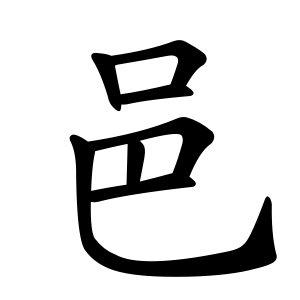邑
- town, district;
It specifically refers to an administrative division or a settlement—essentially, a local area or community.
Etymology
It represents a place where people gather and live. It is a compound ideograph composed of 口, symbolizing a city wall or fence, and 卩, the shape of a kneeling person. Broadly, it signifies a city or capital.
In South Korea, it is used as one of the administrative division units, referring to “eup” (읍) in the local administrative system.
Usage in Korean
When used as a radical, it generally relates to place names, city names, and country names.
Additionally, it indicates concepts related to city districts, administrative divisions, and countries.
It can also denote surnames of people living in those places, which explains why this radical appears in many Chinese family names.
When placed on the right side of a character, it often transforms into a variant form ⻏ (a more simplified or compressed shape).
This radical is important in classifying many characters related to locations and administrative units, as well as personal names derived from those places.
Characters with 邑
- 口日山 (RAU)
- 難口日山 (XRAU)
- ⿱ 口 巴
